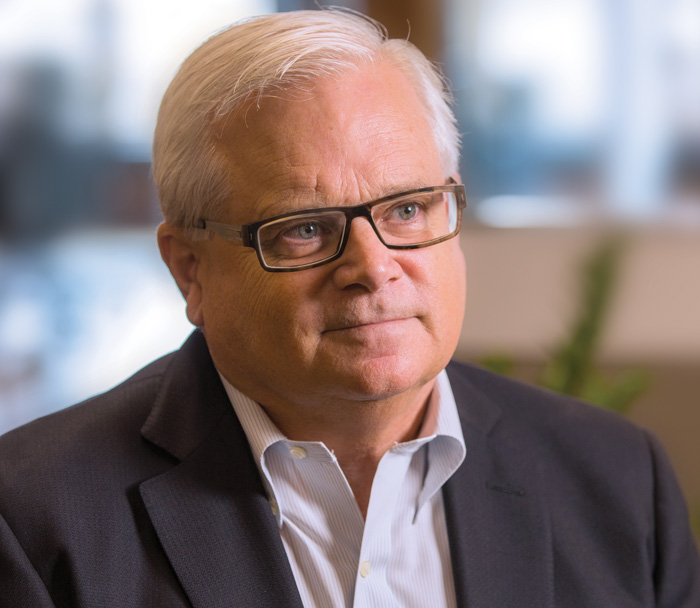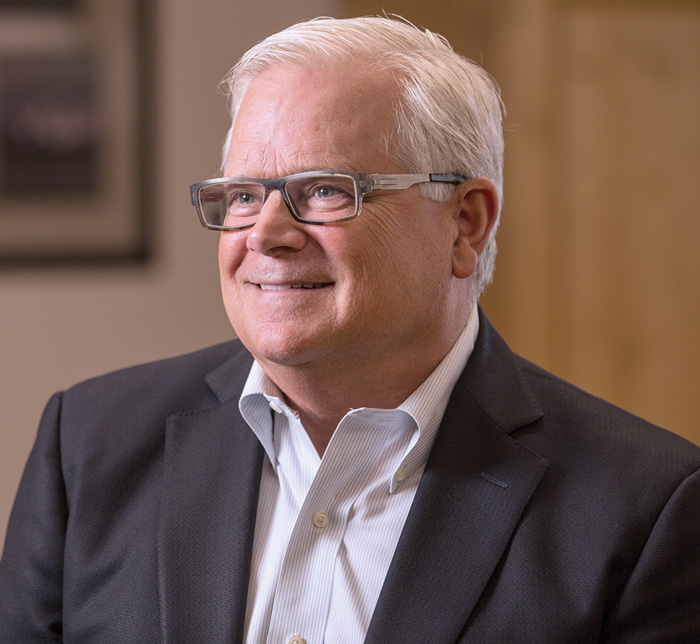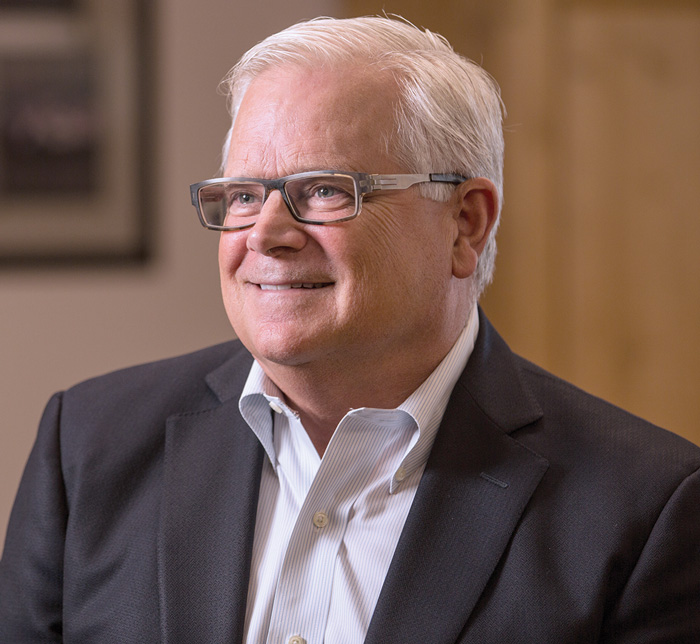
Photos courtesy of Marler Clark
The Food Safety Imperative: Talking With Attorney Bill Marler
The influences that have shaped leading foodborne illness attorney Bill Marler’s work and what he considers the most pressing current foodborne illness issues.
Article Content
The massive 1993 E. coli outbreak linked to Jack in the Box burgers was a turning point for both food safety in the United States and young attorney Bill Marler. The experience of representing 9-year-old victim Brianne Kiner against the fast-food giant inspired Marler to focus his fledgling law career on foodborne illness. Since then, his Seattle law firm has represented thousands of victims of nearly every large foodborne illness outbreak in the United States for the past 26 years.
As the leading foodborne illness attorney in the United States, Marler continues to use his prominence to advocate tirelessly for improved food safety. A major stakeholder in U.S. food policy, Marler helped facilitate passage of the 2010–2011 FDA Food Safety Modernization Act. He works with nonprofit food safety and foodborne illness victims’ organizations and travels extensively to speak to food industry and public health groups about litigation of claims resulting from outbreaks of pathogenic bacteria and viruses and related issues. While his online newsletter, Food Safety News, is a daily go-to for the food safety and legal communities, Marler also is a frequent voice for food safety in both consumer and industry media.
Marler recently spoke with Food Technology about the influences that have shaped his work and the most pressing foodborne illness issues that still need to be addressed. This interview was edited for clarity and brevity.
Q: It’s been almost three decades since the Jack in the Box E. coli outbreak that transformed your career. Where do you see improvements in food safety, and where do you think there’s still work to be done?
Marler: I feel like the post-Jack in the Box work that was done by the Food Safety and Inspection Service (FSIS), the U.S. Department of Agriculture (USDA), the industry, and consumer groups is really a roadmap for things that can go right when people work together.
From about 1993 to about 2002, about 95% of my law firm revenue was E. coli cases linked to hamburger. Even though E. coli O157 was listed as an adulterant in 1994, it took time for that decision by FSIS to work itself through not just the regulatory process, but how do you implement that? [The industry had to do] interventions to make sure that O157:H7 would be far less likely to be in ground beef, which included not just banning E. coli O157, but increasing cook temperatures in meat for both consumers and the restaurant industry.
So I think there was kind of a multifaceted approach. In 2003, there hadn’t been any recalls that spring, that summer. For a moment there, I was like, “Oh gee, I picked a niche that was maybe pretty narrow, and I’m going to have to go do something else as a lawyer.” But unfortunately, we’ve seen—specifically with ongoing outbreaks in the romaine lettuce industry in addition to all the other outbreaks that we’re acutely aware of—Listeria in cantaloupe, Salmonella, and others that have unfortunately kept me as busy, if not busier, than I was in the ’90s.
Q: How did your personal background inform your professional worldview of both agriculture and food production?
Marler: I grew up on a small farm [in western Washington]. My parents were both teachers, but they decided in the ’60s to create a farm on 10 acres, where we raised essentially our own food and slaughtered our own animals, and had a big garden. I got a very good taste of agriculture—certainly not in a large commercial context, but I really understood the importance of taking care of animals and growing your own fruits and vegetables.
[When I turned 16], I ran away from home, not because of anything my parents did, but I wanted to seek some adventure between my sophomore and junior year in high school. So I hitchhiked to eastern Washington and worked the agriculture fields, both hay and apples, cherries, peaches, pears, in Washington and all up and down the Okanogan Valley into Canada. I did that all summer. I learned how hard agriculture can be on workers.
I think I have a better understanding of how agriculture is performed and how difficult it can be to create safe environments so the food that you’re supplying to your consumers is as pathogen-free as possible. So I think that has helped me understand, when I’m working on a case, not only the risks but also the challenges the industry has.
Q: How has interacting with victims of food contamination and their families influenced your commitment to improving the system?
Marler: I think I’ve sometimes been criticized both within my firm and outside [for] taking so many of [my] cases very personally. I think in some respects that was because so many of the cases that I dealt with early on in my career in food involved children. It was also at the time when my kids were small. When the Jack in the Box E. coli outbreak happened, my oldest (who’s now going to be 30) was just a baby. So many times I think, “Well, that could be my kid.”
I think that has impacted me and, in many respects, was one of the guiding reasons why in the early 2000s, I started speaking at various conferences all over the world. I think it’s because I really felt like, if you could do things to help prevent people getting sick, that obviously would be a good thing, because you certainly wouldn’t want that to happen to your own child.
Q: Do you think you’ll ever be able to move on from food contamination cases?
Marler: I remember writing an op-ed in summer 2002 when the ConAgra E. coli outbreak happened. That was really what I would call one of the last significant outbreaks of E. coli O157 in hamburger ... [with] 19 million pounds of meat recalled. [I essentially wrote], if you hate lawyers so much, why don’t you clean up your act and put me out of business?
I think, in some respects, we’ve gotten much better at tracking foodborne illnesses, specifically with using whole genome sequencing, so we see a lot more of them. That’s good news, because when you do track things—especially if you can do what the U.S. Food and Drug Administration (FDA) calls a root cause analysis—and really figure out, to the best of your ability, what is the likely cause of the outbreak, that’s the best way to try to prevent the next one.
But some of the outbreaks that we’ve seen that really make up the bulk of my work now are real challenges for the food industry, because they’re creating products that essentially don’t have a kill step. When you see outbreaks in sprouts, outbreaks in romaine lettuce, those are products that are being produced and there’s no kill step. Environmental contamination, processing failures, and those sorts of things create unique challenges for the industry. Sometimes I don’t know if we’re sufficiently focused on a solution that would really prevent those outbreaks and illnesses from occurring.
Q: Why did you start your daily food science newsletter, Food Safety News, in 2008?
Marler: The 2006 to 2008 period was the time the Democrats had just taken over the U.S. House of Representatives. A lot of the food safety legislation that had been drafted and talked about in post-Jack in the Box days, which had sort of wound up on shelves in Senate and House offices, started coming forward. We started having hearings. There was an outbreak of E. coli in spinach. There was an outbreak at Taco Bell with lettuce. Also, there was the peanut butter outbreak in ’08. All of this was kind of happening at the same time that both the House and the Senate were starting to formulate what eventually became the Food Safety Modernization Act.
I remember being at a hearing in ’06. Other than C-SPAN, there was no coverage by media at all. And I was thinking to myself, “This stuff is so important.” So [in 2008] I went to an old friend of mine, Dan Flynn, who in the ’70s was a young reporter at the Lewiston, Idaho, Morning Tribune … and said, “Dan, I’m thinking about doing this. Would you consider being the editor?” And so we started the paper. We [now] have about 50,000 subscribers and about 3 million unique visits a month, which is pretty spectacular.
Q: How would you assess current consumer awareness and knowledge of food safety?
Marler: I think that’s still an ongoing problem. Even to this day, I’m always a bit surprised when I hear people extol the virtues of raw milk or raw juices.
I think there’s somewhat of a false sense of security in our food in many respects. Because we’re so good at feeding so many people safely, I think otherwise educated people still don’t necessarily see the risks involved in certain food consumption. Part of that is we’re creatures of the success of safety. But I do think that consumers continually need to be reminded about not only food safety hazards, but how to avoid those hazards.
Q: If you were in a position of leadership in either the FDA or the USDA, what changes would you enact immediately?
Marler: Interestingly, I had applied for under secretary of agriculture in the Obama administration and actually went through FBI background checks.
If I was in that sort of position, the first thing I would do is deem all pathogens that can cause human illness adulterants in food, period. Just like we did with E. coli O157, that we petitioned in 2012, to expand to the other big six E. colis that cause human illness. To me, there’s no justification for not doing that. All pathogens are adulterants under the FDA scheme, but not all pathogens are adulterants under the USDA scheme.
If you look at the outbreaks that have occurred in the last decade, specifically with respect to leafy greens, there’s always a cow somewhere in the equation. There’s always a feedlot nearby, or always a dairy farm nearby. And one of the frustrating things for FDA and USDA is being able to do the underlying research, to know that the source of the contamination really was that farm, or really wasn’t. But FDA inspectors cannot go onto cattle farms or feedlots. If we’re going to have ready-to-eat food, we’ve got to really start to think about the environment in which it’s grown.
Q: Why do you consider it important for your law firm, Marler Clark, to support the Real Raw Milk Facts website and working group?
Marler: We pay for the site and help subsidize the cost of the operation. I think it is a really useful tool, because I think it does give a balanced view. It certainly gives people an understanding of the risks that they run in consuming raw milk and … what the risks to retailers are for selling raw milk.
In the state of Washington, crazily enough, raw milk can be sold in a retail setting. The laws vary all over the board in the United States. But here it’s regulated, and it can be sold in grocery stores.
There’s a feed store [nearby] that has organic groceries. The owner is a friend of mine. I was in there one day, looking to see what was in their grocery shop, and I was noticing that they in fact sold raw milk from a dairy about 50 miles away. I told the owner, “One hemolytic uremic syndrome case can cost $10 million to $20 million. One child who is brain injured, one child who is going to have a kidney transplant or multiple kidney transplants, the settlements or verdicts are going to be in the tens of millions of dollars. I can guarantee you that the dairy does not have tens of millions of dollars of insurance. If you sell raw milk here and someone gets sick, that dairy will go bankrupt, and then that family and the lawyer representing them will look to your store as further compensation, and my strong suspicion is you don’t have $10 million of insurance either. So all that you built here will go up in smoke with the sale of one raw milk bottle. It is not worth it.” Fortunately, they decided to stop selling it.
Q: Who in your mind are the heroes who have helped push for improved food safety?
Marler: My friend Dave Theno, who unfortunately passed away in a tragic accident, was the head of food safety at Jack in the Box. I think Dave did much to move the needle forward on food safety. And Mike Taylor, who was a head of FSIS and deemed O157 an adulterant and then shepherded the Food Safety Modernization Act through the FDA.
Those are two, in my view, sort of standout people, but there’s hundreds of others. Even my friend Doug Powell, who runs barfblog [covering food safety from farm to fork]. There’s literally hundreds of people in industry, in academia who’ve done amazing work. There have been a lot of industry leaders who have taken on the risk of inviting me to speak at various food and industry conferences. They have taken a lot of arrows for asking the evil Bill Marler to come speak to them. So I think there are a lot of people that are trying to do the right thing.
Q: So would you say the dynamic between you and the food industry is evolving?
Marler: One could say that. It’s pretty unusual to have a lawyer who sues companies also do consumer advocacy, and at the same time, reach across the chasm with industry to help them avoid getting sued. I created this sort of weird space where I think sometimes people don’t know quite what to do with me.
Q: What would you like your legacy to be?
Marler: When I do retire, which is likely to occur sometime in the next few years, [I’d like my legacy to be] that there’s not going to be a need for [another Bill Marler]. Maybe that’s overly optimistic, but . . . we have the technology, we have the intelligence to know how to fix problems. Do we have the moral imperative to do that? When you’ve seen as many people in ICUs, and you’ve gone to as many funerals as I have for people who the only thing they did [wrong] was eat food, I just sort of feel like there is an imperative, and I just think we need to get there.
Vital Statistics
Credentials: B.A., Political Science, Economics, English, Washington State University; J.D., Seattle University School of Law
Advocacy: Travels widely to speak to food industry and public health groups about litigation claims that result from food pathogen outbreaks
Recognition: 2009 to Present – Best Lawyers in America; 2011 to Present – ABA Journal Best Legal Blogs; 2013 – Seattle University Distinguished Law Graduate
LinkedIn: https://www.linkedin.com/in/billmarler/








